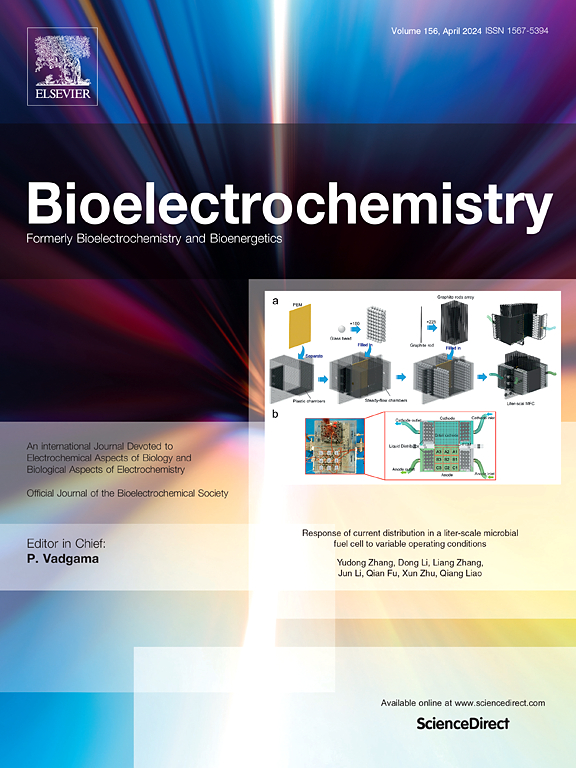An electrochemical aptasensor based on bimetallic carbon nanocomposites AuPt@rGO for ultrasensitive detection of adenosine on portable potentiostat
IF 4.8
2区 化学
Q1 BIOCHEMISTRY & MOLECULAR BIOLOGY
引用次数: 0
Abstract
Adenosine plays a crucial role in the cardiovascular and nervous systems of living organisms. Excessive adenosine can lead to arrhythmias or heart failure, making the accurate detection of adenosine highly valuable. Given the widespread use of sensors for detecting small molecules, we propose a sensitive electrochemical aptasensor for adenosine detection in this study. The aptasensor utilized reduced graphene oxide (rGO) as the base material, and its performance was further enhanced by loading gold-platinum nanoparticles (AuPt@rGO) to improve the current response. The AuPt@rGO composite was synthesized using a simple process and was modified onto screen-printed electrodes (SPE) fabricated in the laboratory. This modification increased the effective area of the working electrode, providing more contact sites and enhancing sensitivity for adenosine detection. As a result, the sensor exhibited excellent performance in selectivity, sensitivity, and stability, with a linear response range for adenosine from 10 nM to 10 μM and a detection limit of 1.28 nM (n = 3). Furthermore, successful detection of adenosine levels in real samples was achieved using a portable potentiostat, demonstrating excellent recovery rates (95.99 %–103.4 %). These results indicate the aptasensor’s significant potential for future applications in field analysis and medical diagnostics.

求助全文
约1分钟内获得全文
求助全文
来源期刊

Bioelectrochemistry
生物-电化学
CiteScore
9.10
自引率
6.00%
发文量
238
审稿时长
38 days
期刊介绍:
An International Journal Devoted to Electrochemical Aspects of Biology and Biological Aspects of Electrochemistry
Bioelectrochemistry is an international journal devoted to electrochemical principles in biology and biological aspects of electrochemistry. It publishes experimental and theoretical papers dealing with the electrochemical aspects of:
• Electrified interfaces (electric double layers, adsorption, electron transfer, protein electrochemistry, basic principles of biosensors, biosensor interfaces and bio-nanosensor design and construction.
• Electric and magnetic field effects (field-dependent processes, field interactions with molecules, intramolecular field effects, sensory systems for electric and magnetic fields, molecular and cellular mechanisms)
• Bioenergetics and signal transduction (energy conversion, photosynthetic and visual membranes)
• Biomembranes and model membranes (thermodynamics and mechanics, membrane transport, electroporation, fusion and insertion)
• Electrochemical applications in medicine and biotechnology (drug delivery and gene transfer to cells and tissues, iontophoresis, skin electroporation, injury and repair).
• Organization and use of arrays in-vitro and in-vivo, including as part of feedback control.
• Electrochemical interrogation of biofilms as generated by microorganisms and tissue reaction associated with medical implants.
 求助内容:
求助内容: 应助结果提醒方式:
应助结果提醒方式:


